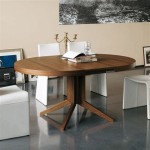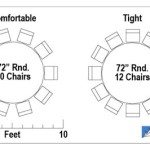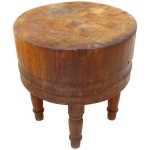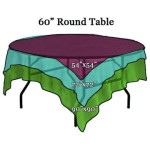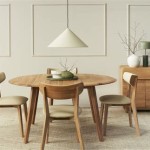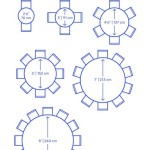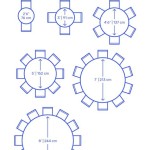How to Make a Quilted Tablecloth
A quilted tablecloth adds a touch of elegance and warmth to any dining experience. Its soft texture and intricate stitching create a welcoming atmosphere, elevating the ordinary to the extraordinary. While the process may seem daunting, crafting a quilted tablecloth is achievable with careful planning and steady hands. This guide will walk you through the essential steps, from selecting materials to finishing touches, ensuring the creation of a beautiful and functional piece for your table.
Choosing Materials & Design
The first step involves selecting the right materials and conceptualizing the desired design. The choice of fabric plays a significant role in the overall aesthetic and practicality of the tablecloth. Cotton is a popular choice due to its durability, ease of washing, and affordability. Linen adds a touch of rustic charm and sophistication, while silk offers a luxurious feel. When considering patterns, one can explore various options – from traditional patchwork designs to contemporary geometric motifs.
The quilting batting acts as the insulating layer, providing the tablecloth with its characteristic softness and structure. A cotton batting is a common and readily available choice, offering a good balance of warmth and thickness. For a more luxurious feel, consider a silk batting, although it may be more delicate and require careful handling. When deciding on the quilting design, consider the complexity of the pattern and the desired level of detail. Simple, straight lines are easier to stitch, while intricate patterns require more time and precision.
Prepping & Cutting Fabrics
Once the materials are selected, preparing the fabrics involves a series of steps to ensure a smooth and accurate cutting process. Begin by washing and ironing all the fabric pieces to remove any wrinkles or shrinkage. This step minimizes distortion during the quilting process. For a standard-sized tablecloth, measure the tabletop and add extra inches for overhang and seam allowances.
Once the measurements are taken, lay out the fabric on a flat surface and use a rotary cutter and ruler to make precise, straight cuts. If using multiple fabrics for patchwork designs, ensure the edges are aligned and even. For quilting batting, cut it slightly larger than the fabric to allow for adequate padding.
Assembling the Layers
Now comes the stage of layering the fabrics and batting. Align the backing fabric (the bottom layer) on a flat surface, followed by the batting, and finally the top fabric. Secure these layers with safety pins or quilting clips to keep them in place during the quilting process. Use a basting stitch to hold these layers together, which temporarily secures them before the permanent quilting stitches are applied. This step helps to prevent shifting during the quilting process.
Quilting the Tablecloth
The quilting process involves stitching the three layers together, creating a stable and durable fabric. The choice of quilting technique depends on the desired design and skill level.
For intricate designs, a free-motion quilting machine is ideal, offering flexibility and control. However, for simpler designs, a walking foot sewing machine can be used, ensuring even stitches and reducing fabric puckering. Regardless of the method chosen, always use a quilting needle (sharper and longer than a regular sewing needle) and a thread specifically designed for quilting (strong and durable).
Finishing Touches
Once the quilting is complete, the final step involves finishing the edges and adding any desired embellishments. Hemming the edges of the tablecloth provides a clean and professional finish, protecting the raw edges from unraveling. There are various methods for hemming, including a simple folded edge or a decorative stitch.
Embellishments such as ribbons, appliqués, or embroidery can enhance the tablecloth's design. These decorative elements can be added before or after the quilting process, depending on their size and weight.
Conclusion
Creating a quilted tablecloth is a rewarding endeavor that allows for personal expression and creativity. By following these steps and utilizing the right materials and techniques, you can craft a unique and beautiful tablecloth that will enhance the dining experience for years to come. Regardless of the design chosen, the process of quilting fosters a sense of accomplishment, leaving you with a treasured piece that reflects your personal style and craftsmanship.

Nordic Star Table Runner Free Pattern The Crafty Quilter

44 Quilted Table Cloths Ideas Quilts Quilt Patterns

How To Make A Simple Patchwork Quilt Tablecloth

Charm Pack Table Runner Topper A Quilting Life

How To Make A Table Runner An Easy Step By Guide Quilting Life

12 Days Of Runner Tutorial Samelia S Mum

Nordic Star Table Runner Free Pattern The Crafty Quilter

One Hour Table Runner Tutorial Complete Step By Instructions

Scrappy Quilt Projects On My Table A Quilting Life

Interlocking Squares Free Craftsy Pattern
Related Posts

